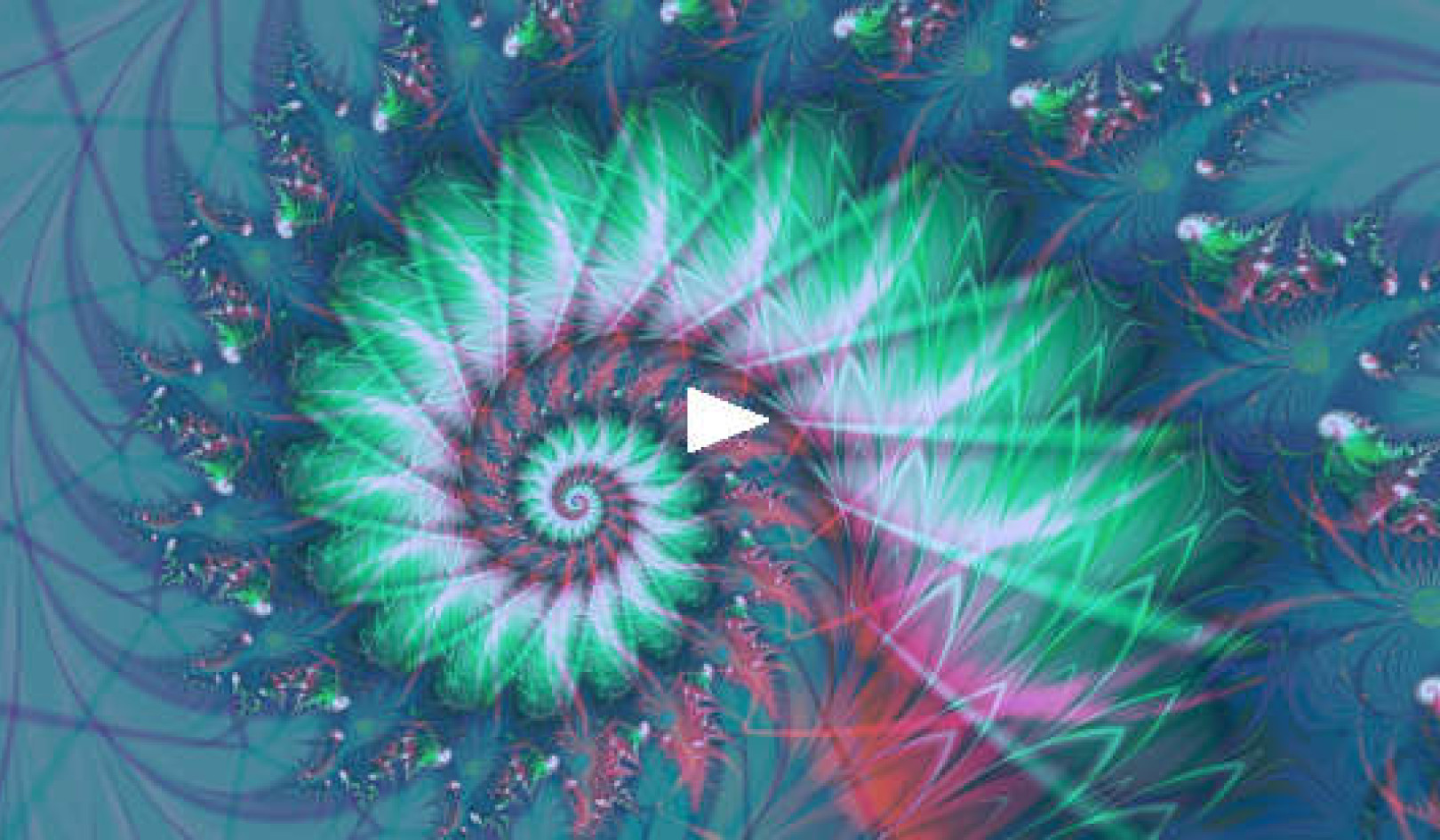
Image by olga-filo
Perhaps the most important thing that spirituality can teach us is that it is possible for us to cultivate connection. We don’t have to live in a state of disconnection.
Spiritual traditions all include sets of practices and lifestyle guidelines designed to help us transcend separation and move towards connection. In terms of the continuum of connection, spiritual traditions teach us that it is possible to move further along the continuum, and show us methods of doing this. In this sense, spiritual paths are paths of connection.
The Core Theme
The core theme of most spiritual traditions is that human suffering and unhappiness is caused by an illusory state of separateness. We lose our sense of oneness with the universe through identifying with our minds and bodies. Under the influence of maya – or illusion – we come to believe that we are separate and limited entities. While this state of separation and delusion exists, suffering is inevitable. We experience ourselves as incomplete and isolated fragments, broken off from the whole.
The Buddha taught that psychological suffering (or dukkha) is the result of perceiving ourselves as separate, autonomous beings. The Chinese philosophy of Taoism suggests that suffering and discord arise when we lose connection to the Tao (the universal principle of harmony that maintains the balance and order of the world) and experience ourselves as separate entities.
However, the illusion of separateness can be transcended. Spiritual geniuses like the Buddha and the Hindu sage Patanjali created extremely detailed and methodical paths of self-development, which are so effective that they are extensively used even now.
The Buddha’s “eightfold path” features a variety of lifestyle guidelines, covering wisdom, ethical conduct and meditation. Patanjali’s “eight-limbed path” of yoga includes ethical conduct, self-discipline, yoga asanas, breath control and deepening levels of absorption and meditation.
In the fertile spiritual ground of India, over the centuries the original teachings of Buddhism and Yoga were adapted in countless ways, giving rise to a host of other paths of connection, such as Tantra, Advaita Vedanta and Mahayana Buddhism.
In fact, almost every culture around the world developed their own paths of connection or adapted those of other cultures. In China, Taoists developed their own path, including ethical action, meditation, psycho-physical exercises (such as Qi Gong) and dietary guidelines. Buddhism spread to China too, as well as to Japan, where Zen is still the main national religion (along with Shinto).
In the Middle East and Europe, paths of connection tended to be more esoteric and exclusive. In the Christian world, the most systematic paths of connection belonged to monastic traditions, where monks lived in voluntary poverty, silence and solitude, with long periods of prayer and meditation. Christianity also has a strong tradition of mystics – such as Meister Eckhart and St. John of the Cross – who attained a high level of wakefulness and offered guidance for others to do the same. In Jewish spirituality, there was no monastic tradition, but the esoteric teachings of the Kabbalah recommended a variety of techniques and lifestyle guidelines, such as prayer, chanting, visualisation of symbols, and contemplating the letters of the Hebrew alphabet. In the Islamic world, the Sufi tradition served a similar purpose as a path of connection.
The Practice of Altruism
All paths of connection place a strong emphasis on altruism. They all include altruism as a practice which can enhance our spiritual development. Altruism and service help us transcend self-centredness and strengthen the connection to other human beings, and the world in general. Adepts are encouraged to live in service and self-sacrifice, practising virtues such as kindness, forgiveness and mercy. This is a strong element of the teachings of the Buddha and Jesus, and this is also true of the Sufi and Jewish paths of connection.
In Sufism, for example, service is a way of opening ourselves to God. Since the nature of God is love, then self-sacrifice and altruism bring us closer to Him, and attune us to His nature. In the Kabbalah, the awakened person has a responsibility to contribute to tikkun olam (the healing of the world). He or she serves others by sharing joy and light, which are “brought down” and spread to everyone. In this way, altruism is both the cause and consequence of spiritual development.
Meditation as a Method of Connection
However, perhaps the most important element of all paths of connection is meditation. All spiritual traditions recommend practices of quietening and emptying the mind. Meditation was central to both Buddhism and Yoga, where a wide variety of different meditative techniques developed, including “focused” meditation (usually paying attention to the breath or a mantra) and “open” meditation (simply observing whatever enters the field of awareness). In China Taoists recommended the practice of tso-wang – “sitting with a blank mind”. Sufism and the Kabbalah both developed forms of meditation.
Western Christian monks and mystics may not have meditated in a direct sense, but no doubt attained meditative states through prayer and contemplation. Of course, nowadays it’s common for people to practise meditation in a secular, standalone basis, outside the context of spiritual traditions.
Meditation is so important because it’s a simple and effective method of cultivating connection, both on a short-and long-term basis. Even a single, short meditation practice can create connection. By quietening our thoughts, we soften the boundaries of our ego. Our surroundings become more real and seem somehow closer to us. Our awareness seems to merge with our surroundings, like a river flowing into the sea. There is an immediate sense of ease and contentment, as the stress and anxiety created by the separate ego recedes.
Usually these effects are just temporary. Perhaps after a few hours, our normal state of consciousness re-establishes itself, and our sense of connection and heightened awareness fade. However, if we meditate regularly over a long period of time – for months, years and even decades – there is a cumulative effect. Our ego-boundaries become permanently softer, and we establish an ongoing sense of connection. We undergo permanent spiritual development and move further along the continuum of connection.
Towards Union
Ultimately, all paths of connection lead to a state of union, in which human beings are no longer isolated, egoic entities but are one with the universe in general, or with God.
Different traditions conceive of union in slightly different ways. What the Yoga tradition refers to as sahaja samadhi (usually translated as “everyday ecstasy”) is slightly different to what Taoists refer to as ming (when we live in harmony with the Tao) or what Christian mystics refer to as theosis or deification (literally, oneness with God).
In Theravada Buddhism (the original form taught by the Buddha) the emphasis isn’t so much on union itself but on overcoming the illusion of the separate self. Nirvana is a state in which our sense of individual identity is “blotted out” or extinguished (which is the literal meaning of the term), so that we no longer feel desire or create karma, and so no longer have to be reborn.
Nevertheless, all traditions agree that union means the end of suffering. As The Upanishads put it, “when a man knows the infinite, he is free; his sorrows have an end.” To transcend separation is to attain bliss.
In psychological terms, union means becoming free of the discord and pathology generated by disconnection. It means feeling a sense of wholeness rather than lack. It means becoming free of the desire to accumulate wealth and status which is produced by a sense of lack. It means becoming free of the need for constant activity and distraction, to escape from our discontent. It means becoming free of the need to identify with groups, and the desire to create conflict with other groups. It means experiencing a natural sense of harmony and living in a state of ease.
Degrees of Awakening
There are degrees of awakening. It’s quite rare for people to live in an ongoing state of union, but based on my own research, I believe that mild wakefulness (with an ongoing sense of connection rather than fully-fledged union) is more common than most people realise.
I have a strong feeling – based on my research – that more and more people are moving towards wakefulness, some of them through following spiritual paths and practices, and others through a sudden shift after intense psychological turmoil.
Imagine if a large proportion of people began to experience a mild degree of wakefulness. On a social level, it would mean an end to oppression, hierarchy, and warfare. It would mean equality for women, humane treatment of animals, and responsible and sustainable treatment of the environment. It would mean that all societies had altruistic and empathic leaders who worked selflessly for the common good. There would be a culture of cooperation and altruism rather than ruthlessness and competition.
If the above description seems like an absurd utopian fantasy, it only shows how far into disconnection we have fallen. In fact, the summary is quite an accurate description of how our hunter-gatherer ancestors lived for tens of thousands of years. If we lived in such societies before – in fact, for the vast majority of our time on this planet – there is no reason why we shouldn’t do so again.
Copyright 2023. All Rights Reserved.
Adapted with permission of the publisher,
Iff Books, an Imprint of John Hunt Publishing.
Article Sourcer:
BOOK: DisConnected
DisConnected: The Roots of Human Cruelty and How Connection Can Heal the World
by Steve Taylor PhD
 DisConnected offers a new vision of human nature and a new understanding of human behaviour and social problems. Connection is the most essential human trait - it determines our behaviour and our level of well-being. Cruelty is the result of a sense of disconnection, while “goodness” stems from connection.
DisConnected offers a new vision of human nature and a new understanding of human behaviour and social problems. Connection is the most essential human trait - it determines our behaviour and our level of well-being. Cruelty is the result of a sense of disconnection, while “goodness” stems from connection.
Disconnected societies are patriarchal, hierarchical and warlike. Connected societies are egalitarian, democratic and peaceful. We can measure both social progress and personal development in terms of how far we move along a continuum of connection. Altruism and spirituality are experiences of our fundamental connection. Regaining awareness of our connection is the only way by which we can live in harmony with ourselves, one another, and the world itself.
For more info and/or to order this book, click here. Also available as a Kindle edition.
About the Author
 Steve Taylor PhD is a senior lecturer in psychology at Leeds Beckett University. He is the author of many best-selling books on spirituality and psychology. For the past ten years, Steve has been included in Mind, Body Spirit magazine's list of the world's 100 most spiritually influential people. Eckhart Tolle has referred to his work as ‘an important contribution to the global shift in awakening.' He lives in Manchester, UK.
Steve Taylor PhD is a senior lecturer in psychology at Leeds Beckett University. He is the author of many best-selling books on spirituality and psychology. For the past ten years, Steve has been included in Mind, Body Spirit magazine's list of the world's 100 most spiritually influential people. Eckhart Tolle has referred to his work as ‘an important contribution to the global shift in awakening.' He lives in Manchester, UK.



























